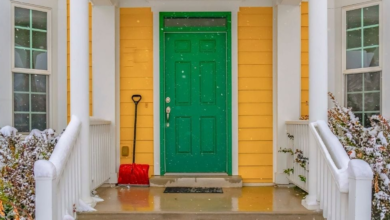The Full Guide to Working with a Paint Calculator by Square Foot

Amongst all the home painting projects, one of the most vital aspects is ensuring that you apply the right quantity of paint to the project. Purchasing too much or too little paint will lead to wasted money, unnecessary trips to stores, or even the slowing down of a project.
Luckily, a paint calculator square feet can assist you in estimating the precise amount of paint required for any job so that you can save money and avoid wastage. In this ultimate guide, we are going to demonstrate how to effectively use a paint calculator, the variables, and painting tips for a hassle-free experience.
Why Use a Paint Calculator for Square Feet?
One must use a paint calculator for several reasons:
- Exact Estimates: Paint calculator eliminates the guesswork associated with estimating paint to buy. That is, you’re less likely to end up buying too little or too much.
- Cost-Saving: The exact percentage of paint estimation keeps you from buying too much paint, which is a cost-saving factor. You also don’t buy extra cans unnecessarily, which usually become waste.
- Saves Waste: By having the right amount of paint, you’re not just saving dollars, but you’re also helping reduce the environmental impact that wasted paint causes.
- Time-Saving: By having the right amount of paint in the first place, there’s no longer a need to make trips back to the store and to have the work disrupted.
See also: Building a Deck That’s Durable and Beautiful
How to Use a Paint Calculator for Square Feet
It is an easy and uncomplicated task to employ a paint calculator. Simply follow these steps for the best estimate for your painting job:
Measure the Surface Area
Length and Height: Start by taking the length and height of the walls you will be painting. To calculate the square footage for walls, multiply the height and length. For instance, if a wall is 12 feet long and 8 feet high, the square footage would be 96 square feet (12 x 8 = 96).
Ceilings and Other Spaces: To paint ceilings, take the width and length of the ceiling and multiply them to achieve the square footage. Do not forget to include other spaces, like trim, doors, and windows, and deduct them from the total surface area because they will not need paint.
Enter Measurements into the Paint Calculator
After determining the total square footage, enter this data into the paint calculator. Most calculators will require the following:
- Square footage of walls, ceiling, and any other surfaces.
- Type of paint you will be using (latex, oil-based).
- Number of coats you are going to use.
- Surface type (smooth walls or textured).
Once you have entered the data, your paint calculator square feet will provide you with an estimate of what amount of paint you will need in gallons or liters.
Account for the Paint’s Coverage Rate
Different types of paint cover different amounts of surface area. A single gallon of paint will normally paint 350 to 400 square feet, depending on the brand and type of paint.
A good estimating painter will take the coverage of paint you’ll be painting with into account so the right estimate may be produced. If you’re unsure about the coverage rate, check the paint can or the manufacturer’s website for details.
Factor in Multiple Coats
Most painting jobs take a minimum of two coats for adequate coverage, particularly when a change in color or uneven surface is being painted. Make sure to factor in the number of coats you will be applying when you are using the paint calculator. For instance, if your total square footage is what requires one gallon of paint for a single coat, you will need double that amount if you are applying two coats.




